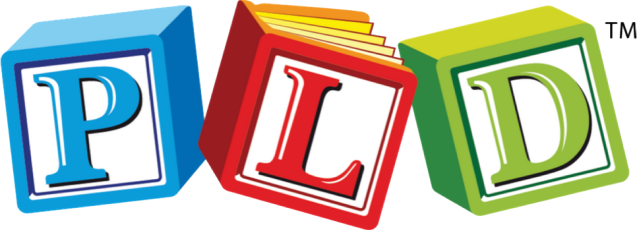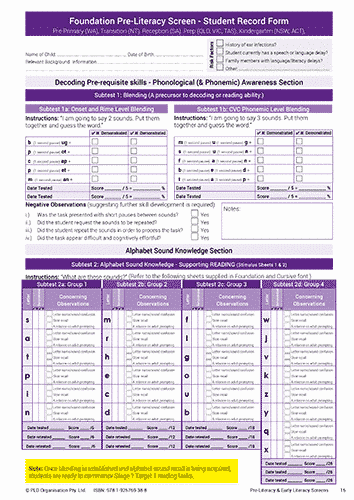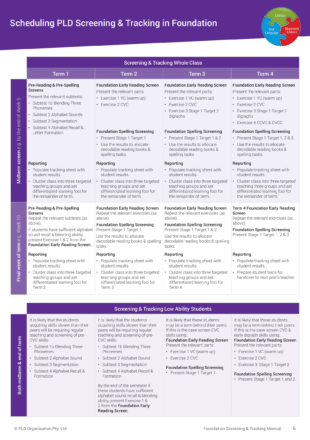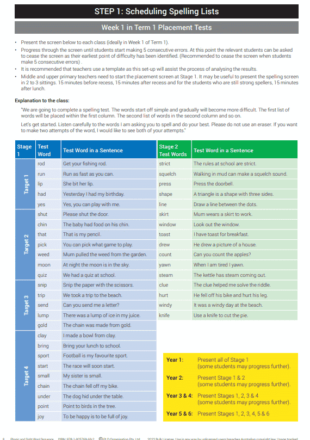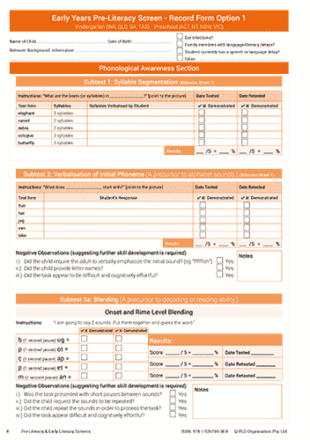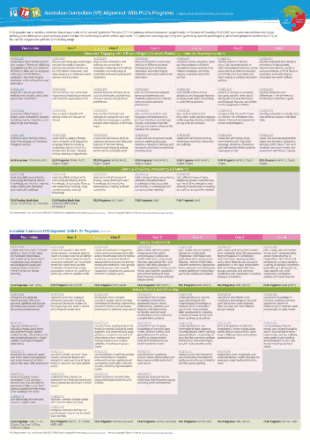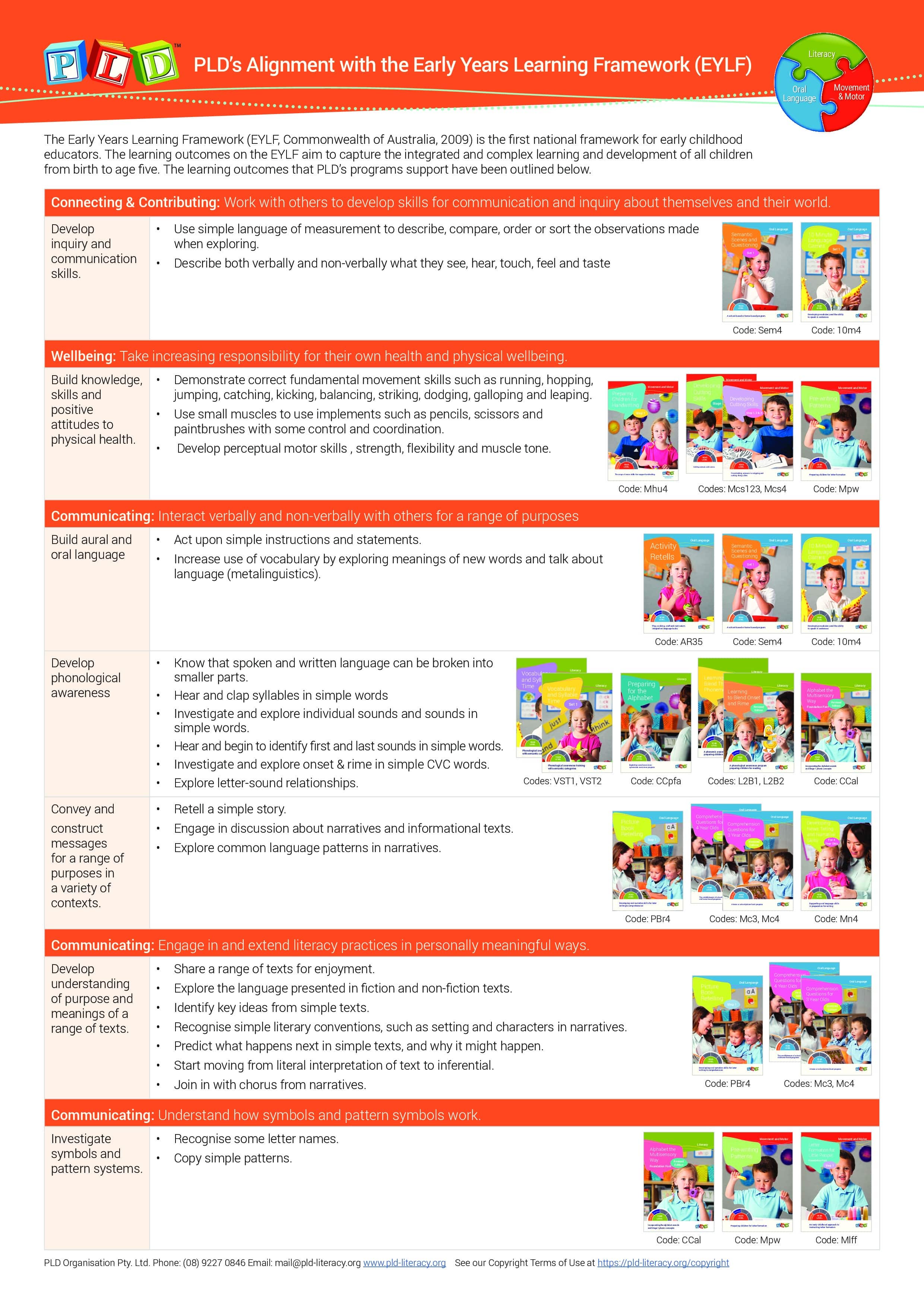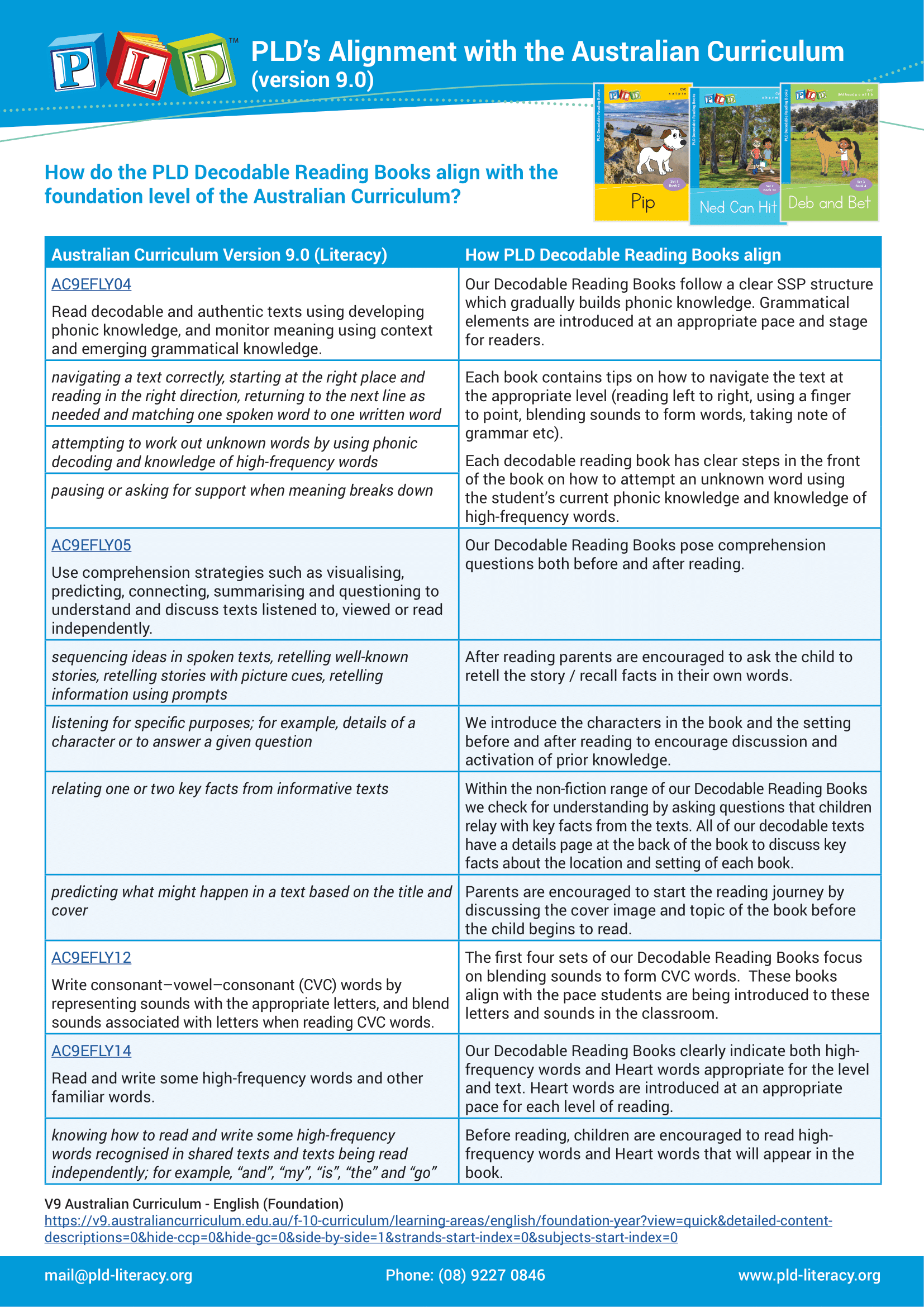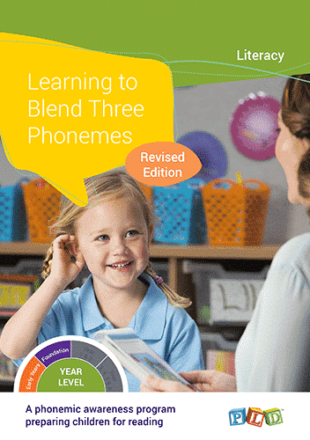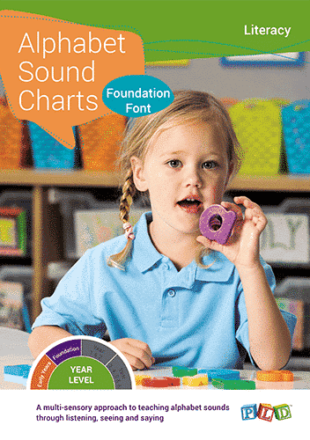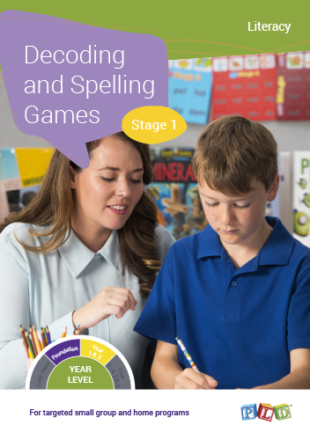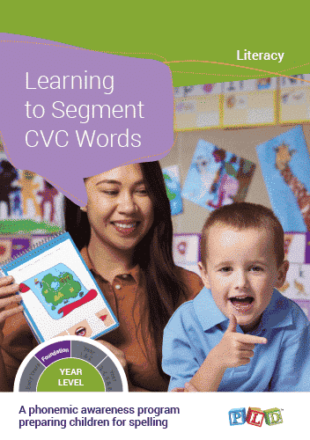-
Foundation Screening & Tracking Manual
The Foundation Screening & Tracking Manual outlines step-by-step instructions including what and when to screen, the materials required, time allocations and discontinue rules. We recommended that the screens are administered following a solid period of repeated targeted instruction as outlined in the PLD Foundation Teaching Sequence Manual. In this way, the screens function as a check-in […]
The Foundation Screening & Tracking Manual outlines step-by-step instructions including what and when to screen, the materials required, time allocations and discontinue rules. We recommended that
-
Foundation Assessment Schedule
The following Foundation full year assessment schedule and scope and sequence have been extracted from the Foundation Screening & Tracking Manual. Within this download, outlines have been provided as a general term-by-term guide from which schools can adapt their scheduling. While some students will progress faster and some slower, these plans should be considered for […]
The following Foundation full year assessment schedule and scope and sequence have been extracted from the Foundation Screening & Tracking Manual. Within this download, outlines
-
Private: Whole School Phonic Placement Screen
The Phonic Placement Screen is designed to quickly establish the range in ability within a class, and provide the stages for which explicit, structured teaching is required.
The Phonic Placement Screens are designed to track the development of single-word spelling based upon PLD’s Structured Synthetic Phonics sequence. The information gained will highlight
-
Early Years Pre-Literacy Screening
The Pre-Literacy Screens have been designed to profile the acquisition of core literacy precursor skills that will impact later reading, spelling and phonic development.
The screen focuses on two main skills: 1. Phonological Awareness: the ability to attend to the phonological structure or sound structure of words. 2. Alphabetic
Foundation Pre-Literacy Screen
Revised for 2020.
The screen focuses upon two main skills:
- Phonological Awareness: the ability to attend to the phonological structure or sound structure of words.
- Alphabetic Knowledge: or more specifically letter sound identification.
Both skills have been identified in education, speech pathology, educational psychology and dyslexia research as predictors of success and difficulties in reading performance.
This screen tracks the precursors of decoding (ie: blending the alphabet sounds) and the precursors of spelling (ie: phonemic segmentation and alphabet recall and formation).
The Foundation Pre-Literacy Screen covers:
- Subtest 1: Blending which is a precursor to decoding or reading ability
- Subtest 2: Alphabet Sound Knowledge to support reading
- Subtest 3: Segmentation of CVC Words a precursor to spelling and writing
- Subtest 4: Alphabet Sound Recall & Formation – Supporting Spelling & Writing
The stimulus sheets are available in cursive and Foundation Font. This screen also applies to: Pre-Primary (WA), Kindergarten (NSW/ACT), Prep (QLD/VIC/TAS) Reception (SA) & Transition (NT). If training is required to administer this assessment, please refer to the following online course: https://courses.pld-literacy.org/courses/Learning-to-read-spell-and-write-in-Foundation
Please note that the test results can be applied directly to excel tracking sheets. Request the 2020 Student Monitoring and Tracking Spreadsheet here.
See our Copyright Terms of Use at https://pld-literacy.org/help-pages/copyright-policy
Books: PLD’s books may only be used by the Authorised Purchaser, and the Authorised Purchaser’s students, and only in conjunction with classes taken by the Authorised Purchaser. PLD’s books may be photocopied up to 10% per year for use only by the Authorised Purchaser. The Authorised Purchaser is defined as the original purchaser of the PLD materials.
eBooks: PLD’s eBooks may only be used by the Authorised Purchaser, and the Authorised Purchaser’s students, and only in conjunction with classes taken by the Authorised Purchaser. The Authorised Purchaser is defined as the original purchaser of the PLD eBook. Under the ‘Statutory Educational Licence’ the authorised purchaser can:
- View the eBook as a whole or in part
- Copy the eBook to their personal drive or locally on their device
- Display the eBook on your Interactive Whiteboard, projector or smart TV, for the purpose of teaching the students in their own classroom
- Photocopy or print up to 10% of the eBook per year, for use with the students in their classroom(s).
For copyright purposes, every page of the PLD eBooks will be stamped with the name & email address provided by the purchaser at the time of order. PLD ebooks belong solely to the purchaser and may not be shared with colleagues, parents or anyone else. PLD eBooks must not be uploaded to school servers, intranets or online platforms. Schools wishing to licence PLD eBooks can contact us HERE.
School Licences: A School Licence is a multi-user subscription to a PLD resource, such as a book or program, in a digital and printable format that is accessible via the ‘My Subscription’ section of the PLD website. A School Licence is valid for 12 months from the date of purchase and can be used by an unlimited number of teachers within a school. When bought under a School Licence:
- Resources are accessible in digital, flipbook format, which teachers can access from anywhere, at any time, on any device via the PLD website.
- The resources can be used by any amount of teachers in that school.
- Multiple teachers can access the resources simultaneously.
- The resource is available to print, subject to the standard 10% per year limitation as per Australian Copyright law.
- Updated versions of resources will be automatically accessible to users with a current licence for free, ensuring all users have access to the latest versions of resources.
- Resources are stored centrally and accessed via a secure login account on the PLD website. Thus, all currently subscription resources are accessible in the one convenient place, making resources extremely easy to find. Moreso, the school licence offering eradicates the frustration of lost or misplaced resources and programs which happens often with hardback books.
Additional information can be accessed via the following links:
Books: https://support.pld-literacy.org/en-au/article/plds-printed-electronic-materials-how-can-they-be-used-can-i-share-them-with-a-friendcolleague-9lk4y/
eBooks: https://support.pld-literacy.org/en-au/article/the-pld-ebooks-how-can-they-be-used-what-is-the-copyright-policy-ptfya8/
PLD’s Copyright Policy: https://support.pld-literacy.org/en-au/article/copyright-and-terms-of-use-of-pld-literacy-15tkcer/

